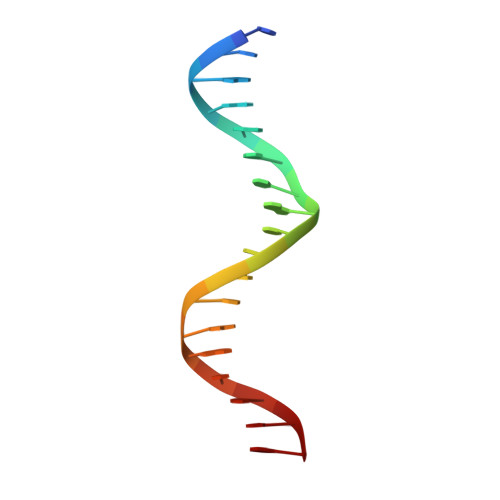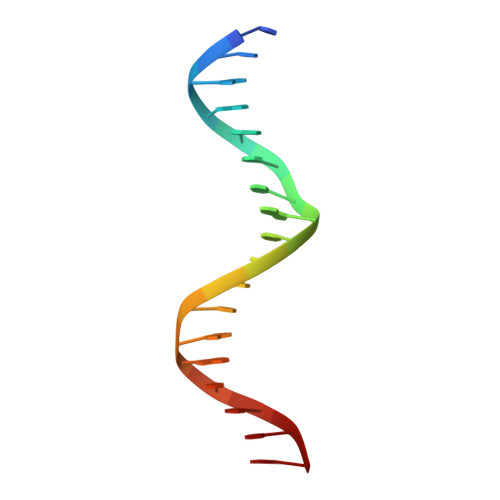The crystal structure of the estrogen receptor DNA-binding domain bound to DNA: how receptors discriminate between their response elements.
Schwabe, J.W., Chapman, L., Finch, J.T., Rhodes, D.(1993) Cell 75: 567-578
- PubMed: 8221895
- DOI: https://doi.org/10.1016/0092-8674(93)90390-c
- Primary Citation of Related Structures:
1HCQ - PubMed Abstract:
The nuclear hormone receptors are a superfamily of ligand-activated DNA-binding transcription factors. We have determined the crystal structure (at 2.4 A) of the fully specific complex between the DNA-binding domain from the estrogen receptor and DNA. The protein binds as a symmetrical dimer to its palindromic binding site consisting of two 6 bp consensus half sites with three intervening base pairs. This structure reveals how the protein recognizes its own half site sequence rather than that of the related glucocorticoid receptor, which differs by only two base pairs. Since all nuclear hormone receptors recognize one or the other of these two consensus half site sequences, this recognition mechanism applies generally to the whole receptor family.
Organizational Affiliation:
Medical Research Council Laboratory of Molecular Biology, Cambridge, England.

















